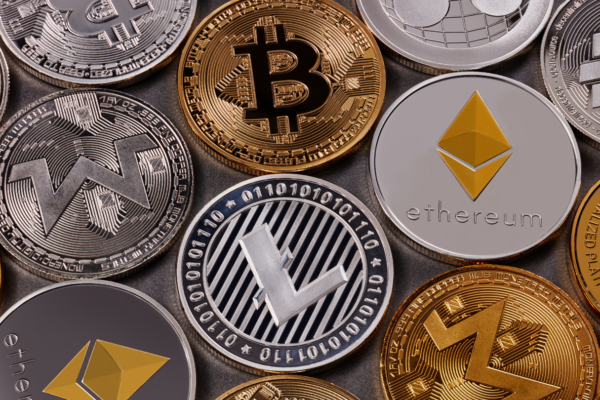What is Solana (SOL)? Is it Halal?

IW
IFG Staff Writers
11 min read
Last updated on:
After the advent of Ethereum, developers in the crypto space rushed to create new technologies to improve on the Ethereum network.
Solana is an open-source network that features smart contract technology and the ability for developers to build decentralised applications in the Web 3.0 space just like Ethereum.
It also improves on Ethereum’s technology in substantial ways, making it a true contender.
Most scholars hold Solana to be halal, we also share this view.
Continue reading for a deep dive into Solana and the Islamic views on it.
What is Solana?
The co-founder of Solana, Anatoly Yakovenko, published the white paper for Solana in 2017.
Solana was developed by Solana Labs in San Francisco and is now run as an open-source project by the Solana Foundation in Geneva.
Just like Ethereum, Solana is a decentralised network using blockchain technology that allows developers to build decentralised applications and utilise smart contracts.
Solana has its own token, with the ticker SOL, just as Ethereum has Ether (ETH).
What does Solana do?
Solana uses the same foundational technology as Ethereum: blockchain and smart contracts.
But Solana was developed to be an improvement of Ethereum, and it has some unique features.
Yakovenko’s major breakthrough was the Proof-of-History mechanism. He noticed that prior to Solana, no blockchain had a standardised clock across all its nodes.
This meant that each node in the Ethereum network, for example, followed its own local time without knowledge of the clock other nodes were following.
Lacking a single, trusted source of time, disagreements between nodes could take place if they didn’t make the same choice when it came to timestamps.
Solana innovated in this regard and records the time in the decentralised blockchain ledger that is used to record financial transactions. Given this development, each node could rely on the time recorded in the decentralised ledger on a trustless basis.
How does Solana work technically?
Solana has some significant innovations that were meant to solve the ‘blockchain trilemma’ that Vitalik Buterin (co-creator of Ethereum) posed.
The blockchain trilemma states that developers can only provide two of the three fundamental aspects necessary in a large-scale decentralised network: decentralisation, security, and scalability. It is very difficult to achieve all three, so the trilemma goes.
So, how does Solana work technically and how does it try to overcome the trilemma?
Proof-of-Stake (PoS)
Unlike Bitcoin and Ethereum, Solana uses the Proof-of-Stake (PoS) mechanism to mine new blocks on its blockchain.
The PoS mechanism is where users lock up (or ‘stake’) some of their tokens, SOL in this case, and then users are selected at random to generate the next block in the blockchain and are rewarded in the process. Usually, the more tokens you stake the more likely you are to be chosen to verify the next block.
Bitcoin and Ethereum currently use the Proof-of-Work (PoW) mechanism. In this mechanism, high amounts of CPU power are required to solve complex cryptographic puzzles. Users who solve these puzzles are chosen to verify the next block in the blockchain.
The problem with the PoW mechanism used by Bitcoin and Ethereum is that it increasingly uses more power the more blocks there are. So it’s highly unsustainable in the long-term.
The PoS mechanism on the other hand is much more energy efficient, making Solana more scalable and sustainable. Ethereum does plan to eventually move on to the PoS mechanism in a future upgrade.
You can read more about staking and its permissibility in our staking article.
Proof-of-History (PoH)
Synchronising time between different nodes in a network always proves to be a challenge. Google, for example, uses synchronised atomic clocks between its data centres. This requires engineers to constantly maintain them.
This problem becomes even more difficult in a decentralised system. Solana solves this problem with Proof-of-History (PoH).
If you wanted to prove you took a photo at a certain time, you could look at the metadata. Another option would be to take a newspaper published today and take a photo with it. You then prove the photo was captured after that date.
With PoH you can create a historical record that an event occurred after a specific moment in time. It uses the output of one transaction and feeds it into the input of the next transaction, creating a unique sequence of events.
A long, unbroken, verifiable sequence of transactions is created without the need for a conventional timestamp. The system also uses the time elapsed for transactions to verify how much time has passed.
This innovation makes Solana a technological improvement on Ethereum and Bitcoin. It also makes it more scalable.
More transactions per second and lower gas fees
One of the most useful innovations of Solana that makes it a true contender to Ethereum is that it allows for more transactions per second and lower gas fees.
Solana chooses one lead node to sequence messages between nodes. This reduces ‘workload’.
Instead of multiple nodes having to sequence messages between different nodes like other blockchains, the work is carried out by a single node which increases transaction throughput, i.e. more transactions per second.
The reduced workload also means that the gas fees can be lower, meaning you pay less to use the network.
Solana claims it can theoretically perform 710,000 transactions per second. This blows Ethereum’s measly 10 transactions per second. This makes Solana more useable and scalable and a contender for DeFi infrastructure.
Actual data shows, however, that Solana is currently handling under 5,000 transactions per second at the moment.
It has a long way to go to achieve what Solana claims it can do, but still comfortably beats Ethereum’s performance. In comparison, a centralised network like Visa’s can handle 1,500-2,000 transactions per second.
Combined with PoH, this makes Solana truly scalable.
What are the use cases of Solana?
Solana has multiple use cases just like Ethereum:
DeFi and currency
Just like Bitcoin and Ethereum, users can trade and lend the SOL token through most crypto exchanges.
The Solana network allows developers to create their own cryptocurrencies and decentralised applications. Developers are increasingly using Solana to create apps in the DeFi space.
Developers use the ‘SPL standard’ to create cryptocurrencies and apps on the Solana network, just like Ethereum has the ERC-20 standard. The standard allows these developed tokens and apps to interact across the network.
Non-Fungible-Tokens (NFTs)
NFTs are tokens that can be attached to unique items, such as art and media. These unique tokens are not interchangeable like a standard SOL token. An NFT is secured on the Solana network and can only have one owner at a time. NFTs can be sold on global markets powered by the Solana network.
Decentralised Autonomous Organisations (DAOs)
DAOs are open-source organisations that have no central authority. Developers can create DAOs using the Solana network, and can use the SOL token to cast votes on governance matters. The entire organisation can be powered by the Solana network.
Using smart contract technology, the rules of the DAO are coded into software and decisions are made by voters.
Are people using Solana right now?
SOL currently holds the 9th spot in the DeFi space, making it a major player where there are innumerable alternatives.
The market capitalisation of Solana sits at $107 billion. It has a market dominance of 2.9%. The crypto space is mostly a duopoly at this moment in time, with Bitcoin having 60% market dominance, whilst Ethereum has a 15% market dominance. But this is slowly changing.
The Bank of America has put its confidence behind Solana slowly chipping away at Ethereum’s market dominance in the DeFi and NFT space. JP Morgan is another big name that has declared Solana is slowly rising, with Ethereum’s market dominance in the DeFi space decreasing from 95% in 2021 to 80% in 2022.
Solana beats Ethereum when it comes to monthly transaction counts. In November 2021, Solana recorded 1.48 billion transactions, which makes it the most active smart contract blockchain. Ethereum recorded 38.9 million transactions over the same period, coming fourth after Binance Smart Chain in second place and Polygon in third place.
Given the confidence of institutional investors and the increasing market dominance in the DeFi space, Solana is very popular right now.
What are the strengths and weaknesses of Solana?
Strengths
- The biggest strength Solana has is its cheap fees and high transaction count per second. Fees are around 0.000005 SOL, which is a fraction of a cent. While it records just under 5,000 transactions per second at the moment.
- Solana is incredibly developer and user friendly because of its high transaction count per second and low fees. There is a thriving community of developers with over 500 decentralised applications already made. Its wallet and network UI means it’s also friendly for users.
- The Solana project has a lot of confidence from institutional investors such as JP Morgan and The Bank of America. It’s also slowly gaining market dominance and is a rising name in the space. It’s also a very well-funded project with backers such as Alameda Research, FTX exchange, and Multicoin Capital along with being open-source.
- Solana uses Proof-of-Stake which means it isn’t as energy-intensive as Bitcoin and Ethereum which use Proof-of-Work.
Weaknesses
- Solana has very costly hardware requirements which also require costly maintenance.
- Solana has had multiple outages over several months that can last several hours. This doesn’t bring confidence for its long-term stability and reliance. When a network is host to massive projects involving large sums of money, this can be dangerous.
- While Solana is increasing its market dominance, it’s still a tiny project in the grand-scale of things. With only under 500 decentralised applications compared to thousands on the Ethereum network, it has a lot of catching up to do.
Is Solana a good investment?
Crypto has now become a staple of many investment portfolios. Even major institutional investors now hold a small percentage of crypto in their portfolios.
Putting a small percentage of your portfolio means that you can benefit from some of the potentially dazzling increases in crypto whilst also not going bankrupt if crypto were to take a really deep nosedive.
We’ve written a whole guide on how to invest in crypto the Islamic way, check that out for a good walkthrough on how to actually begin investing.
Because it is in the top 10 cryptocurrencies, Solana is available to trade in all major crypto exchanges from Coinbase to Swissborg to Binance.
SOL can be a good investment with sufficient due diligence. You need to understand the market competition between Solana and other smart contract blockchains such as Ethereum and Cardano and base your investment allocation on solid research.
Because of its gradual increasing dominance and developer attention, Solana is definitely one to take seriously.
SOL has had a dizzying increase of 3,845.99% since its availability in 2019. In early 2020 it was worth around half a dollar, and as of today it is worth just under $42. It reached a height of almost $260 during the peak of the market in summer 2021.
SOL’s rapid ROI shows how the market is hungry for Ethereum competitors and alternative networks in the DeFi and NFT space.
With Ethereum’s gradually waning influence, it is a realistic possibility that Solana will continue increasing alongside other contenders.
Alternatives to Solana
Solana is one of many smart contract blockchains. While it has considerable advantages over other networks, it is not the only network with unique technical innovations.
If Solana is to truly rise and become part of the core DeFi infrastructure, it will have to maintain its competitive advantages over the networks below.
Ethereum
We can’t mention alternatives to Solana without mentioning Ethereum. Given how synonymous it is with the DeFi space and its 80% market dominance, Ethereum is the giant that Solana needs to wrestle with.
While Solana has technical improvements on Ethereum, there are two reasons why this may not be enough to contend with Ethereum.
Firstly, Ethereum has a level of trust in the community that Solana is a long way from achieving. Given its outages and lack of stability, Solana has a lot to do to garner Ethereum-level trust.
Secondly, Ethereum is planning an upgrade soon which will allow it to increase its transactions per second and move it to a Proof-of-Stake system. This removes some of the competitive advantages that Solana holds.
Cardano
Cardano (ADA) has a market capitalisation of almost $20 billion and hence the number 7 spot in the crypto space. Cardano was founded based on peer-reviewed research and evidence-based methods, lending it technical credibility.
Cardano claims to be the most environmentally friendly blockchain network, using only the power of 600 homes annually, which is comparatively less compared to the colossal energy usage of other major cryptocurrencies. This makes it more sustainable in the long-term.
Solana also boasts its own eco-credentials, however. In a world increasingly weary about the environment, Solana has committed to carbon neutrality. Cardano also has a slower development process which means Solana can gradually outshine it.
Polkadot
Coming in the 11th spot with a market capitalisation of $8 billion, Polkadot (DOT) is well-known in the crypto space for its ‘interoperability’ feature.
This allows several blockchains together to form one larger network, allowing data to be shared securely and efficiently.
This cross-chain collaboration is so important for the future of Web 3.0 and the internet at large, that Polkadot can seriously be considered one of the core digital infrastructures of the future and slowly gain market dominance.
Polkadot is a network that can co-exist with Solana as it aims to tackle different problems. Solana is focussed on high transaction speeds and low fees, whilst Polkadot is focussed on interoperability.
Is Solana halal?
Just like Ethereum, most scholars hold Solana and its SOL token to be halal. We also share this view.
The essence of the debate on whether cryptocurrencies are halal comes down to whether they are ‘Māl’ as we have explained previously. Māl is something that can be acquired, whether it be an item or a service.
There are three stances on cryptocurrencies today:
- Cryptocurrency is not Māl, rather it is a speculative, non-Sharia-compliant investment.
- Cryptocurrency is a digital asset but not a currency.
- Cryptocurrency is a digital currency.
Proponents of view (1) argue that cryptocurrencies are not Sharia-compliant since they have no intrinsic value and are merely entries on a digital ledger.
Our view has always been that (1) does not seem right since cryptocurrencies have value as millions of people are willing to buy, hold, and trade them. They are just as real as fiat currency today which mostly exists in the spreadsheets of banks. Our monetary system became predominantly digital a while ago.
View (2) seems to be the most realistic view, as cryptocurrencies are a new and emerging technology that are yet to mature into fully fledged currencies used by economies at large. However, in practice, there is no real difference for casual users between (2) and (3) since they both consider trading cryptocurrencies to be permissible.
Conclusion
Solana has impressive solutions to some technical problems that plague the rest of the blockchain world. From its Proof-of-History mechanism to its high speed and low fees, there are several things that make Solana an outstanding cryptocurrency network.
As long as Solana can garner the trust of the wider community and fix its stability issues, there is a good chance it could become a juggernaut in its own right.
From a Sharia point of view, there is nothing wrong with buying and selling SOL and using the Solana network to make Sharia-compliant applications in the Web 3.0 and DeFi spaces.
Of course, Riba should be avoided. It is important to note that not everything that is termed ‘interest’ would be Riba. For more information on that, refer to our staking article to get a better grip on this concept.
A good place to start dabbling in crypto as a Muslim is to read our Complete Crypto Guide for Muslims.
Comments (0)
Related Articles
View all
Is Bitcoin and Crypto Haram? The Ultimate Guide for Muslim Investors
14 July 2025 9 min read




Leave a Reply